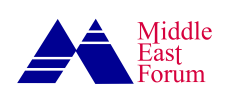Iranian truck owners and drivers have sustained a nationwide strike for over ten days, causing significant economic disruption, despite mounting pressure and threats from a government struggling to intimidate or control the hundreds of thousands standing in defiance. The strike began on May 22, 2025, just ahead of a planned fuel price hike. But the trucking industry’s grievances run deeper—rooted in long-suppressed demands under a government that not only dominates the economy but also serves as its largest client. The state sets not only freight rates but also prices in other sectors it deems essential to public welfare. Yet the inefficiency and corruption inherent in this state-controlled economy have taken a toll on both consumers and businesses.
[Activists] urge other workers and sectors to join the action, creating an environment that would highlight the government’s inability to control the situation.
Iranian activists at home and abroad hail the strike as an act of courage that can further weaken the clerical regime. They urge other workers and sectors to join the action, creating an environment that would highlight the government’s inability to control the situation, leading to more civil disobedience. The hashtag #IranTruckersStrike is trending on social media as activists hope this could be a catalyst to threaten the Islamic Republic.
The strike has spread to more than 150 cities, crippling deliveries of food and other essentials in a country five times the size of France, with imports coming from the Persian Gulf in the south that must be hauled hundreds of miles inland. Many warmer provinces also count on selling their fresh produce to other regions, and trucking constitutes 90 percent of freight transportation in the country.
One AI-generated photo shared on social media depicts a waste disposal site with the Islamic Republic flag lying at the bottom of a large pit while garbage trucks offload refuse on it.
State-owned media in Iran and all other outlets that are under censorship are virtually silent on the strike, except when officials utter threats against truckers. But it is hard to intimidate an estimated 400,000 owners and drivers. Few trucks in Iran are owned by large transportation companies. Most are owned by families or individuals, making it hard for the authorities to exercise influence on them.
Any widespread use of force could lead to clashes and ignite dangerous protests. The truckers in large groups either park on the roads and open fields displaying strike signs, or drive on the roads in convoys urging others to join them.
According to social media reports, car assembly plants have come to a halt and many cement factories have shut down, although it is difficult to determine if the strike alone has caused the disruptions. Summer heat is in full swing and Iran’s electricity shortages are also creating havoc in various sectors. Most industries were already on a power-rationing schedule since winter, and now with more air-conditioners working, the government cannot provide enough electricity to residential and commercial users.
Many say that [President] Trump should support the Iranian people and not agree to release billions of dollars in frozen funds to the Islamic Republic.
Activists who are dismayed by President Donald Trump’s recent announcement that his administration is close to a nuclear deal with the Iranian government urge the United States not throw a financial lifeline to Tehran. Many say that Trump should support the Iranian people and not agree to release billions of dollars in frozen funds to the Islamic Republic, which is perhaps in its weakest position in 46 years.
Activists also urge unions and truck drivers in other countries to express solidarity with their Iranian counterparts. They believe this would help publicize their cause and provide moral support for the strikers.
On May 30, the truckers’ union wrote in a statement: “This unity and solidarity is the result of your will. We thank all the drivers, teachers, retirees, workers, and freedom-seeking citizens who joined us. Our path is clear, and we will remain steadfast in pursuing it.” It appears their statement is less an aspiration and more a promise. The Islamic Republic is increasingly on very shaky ground.







